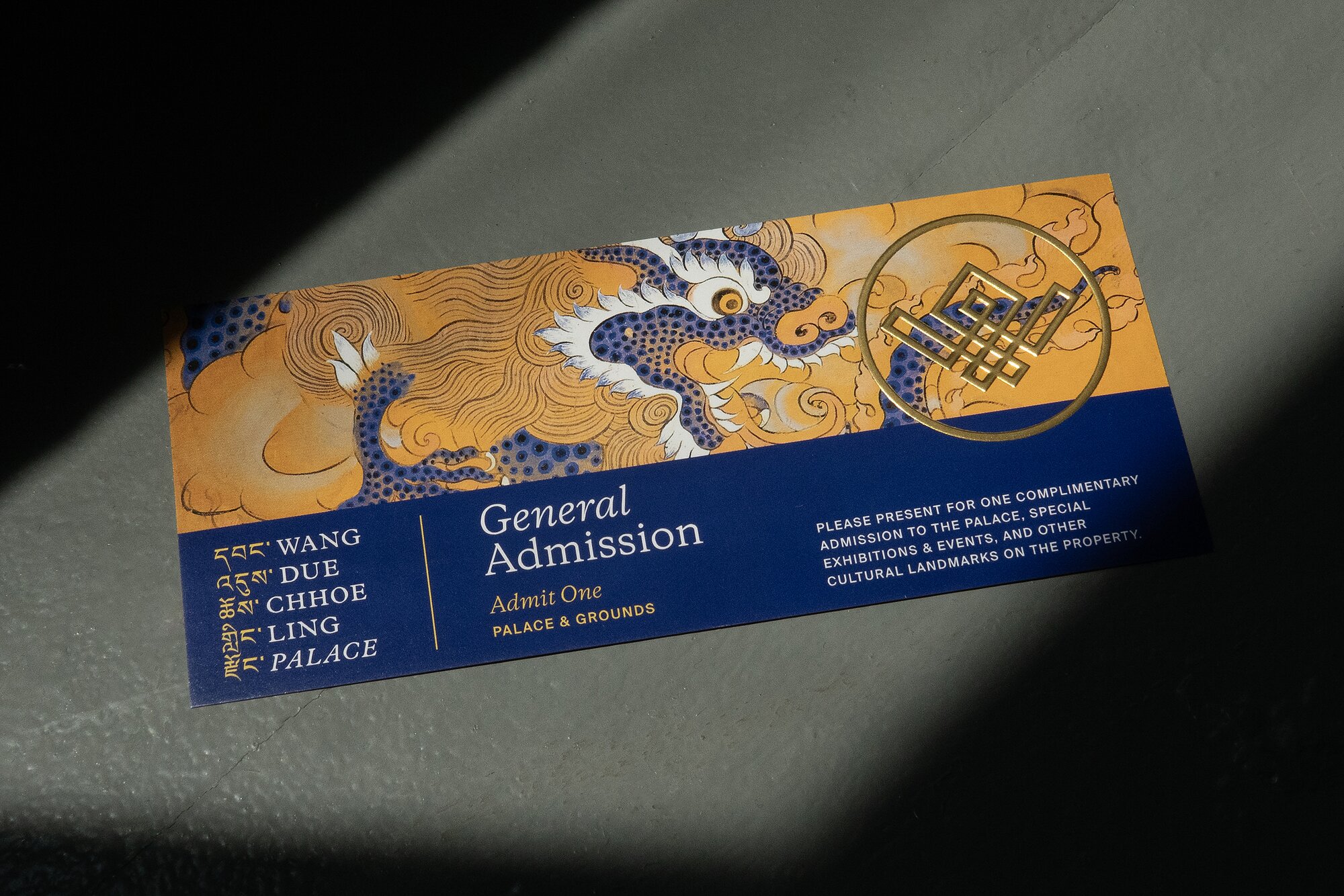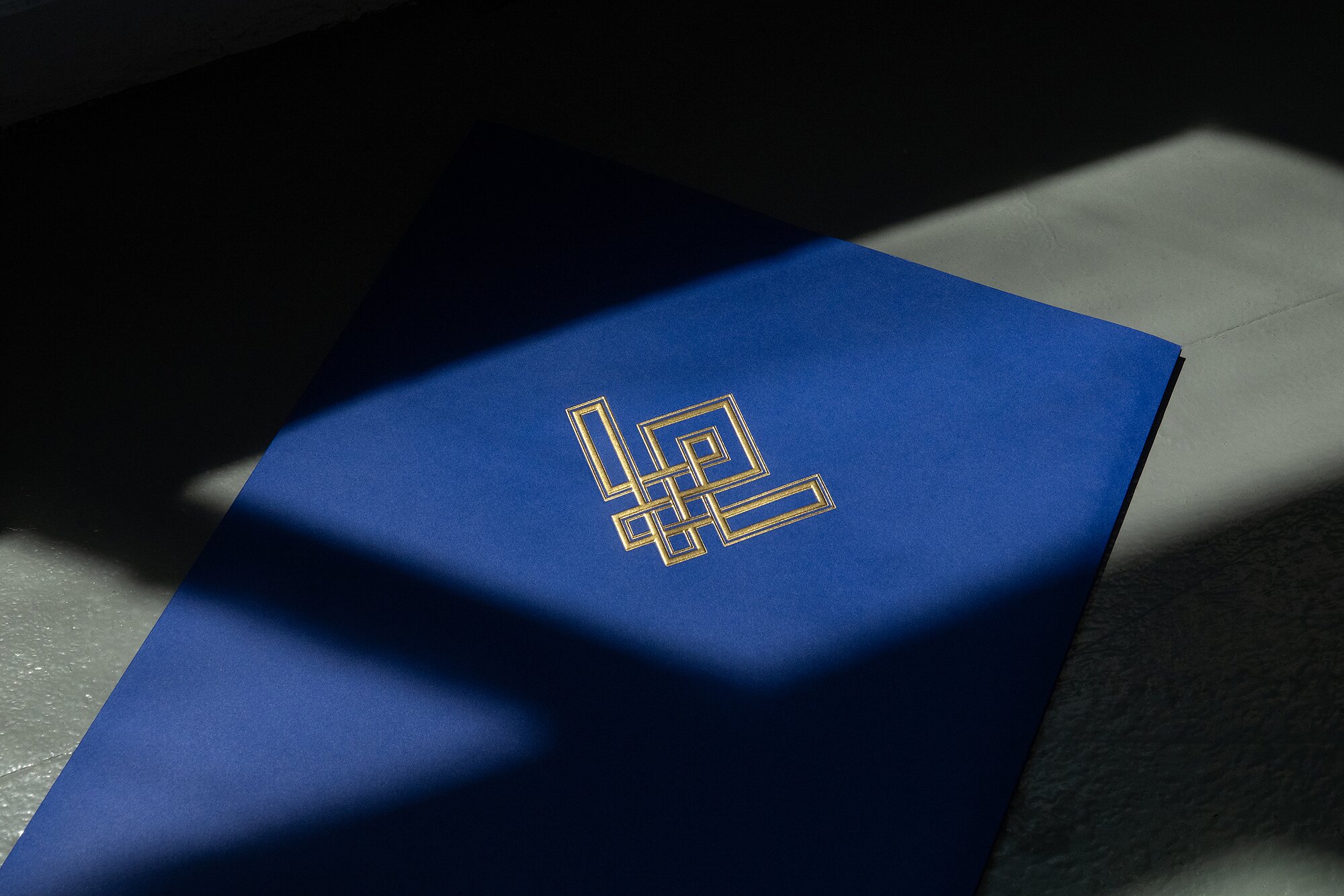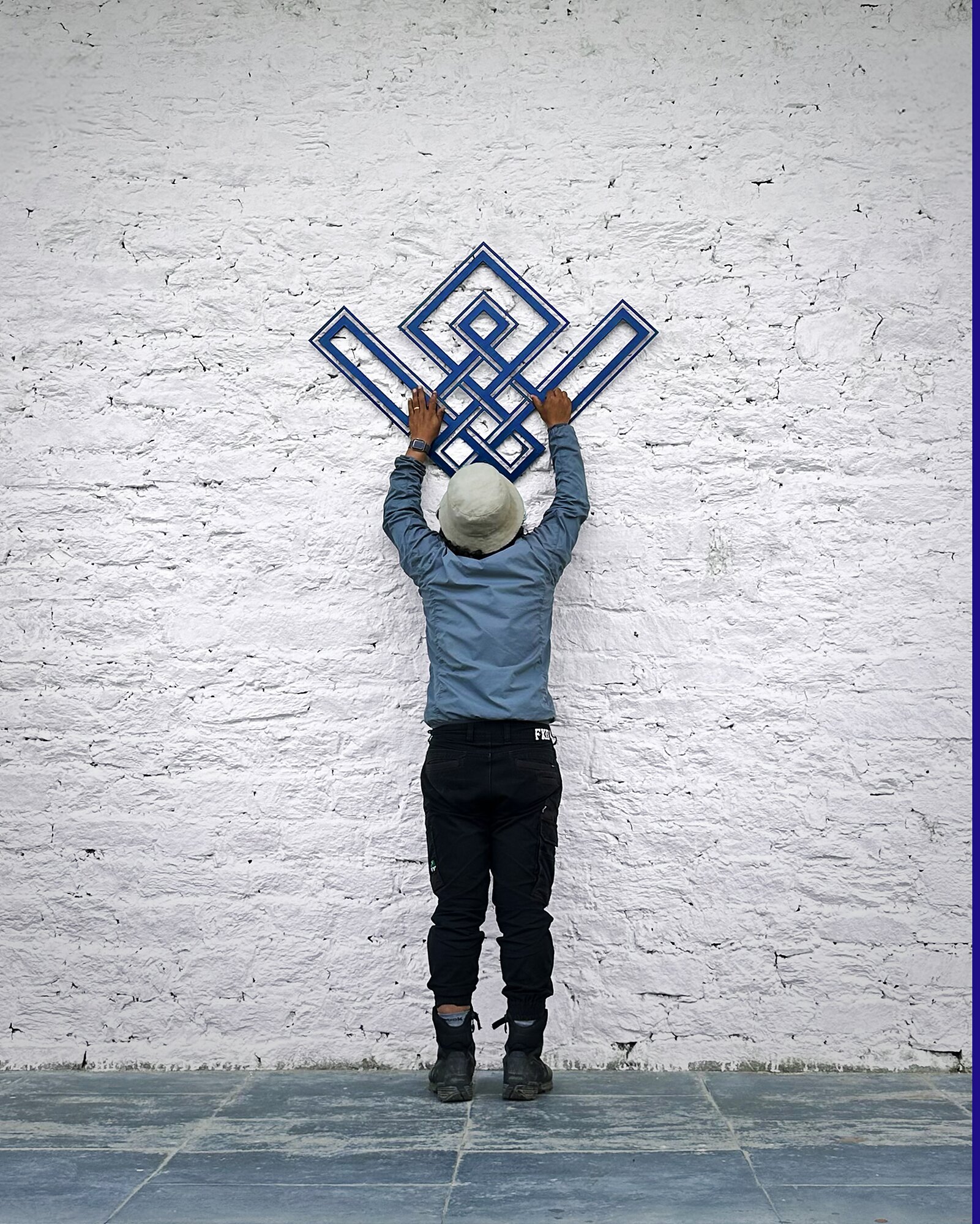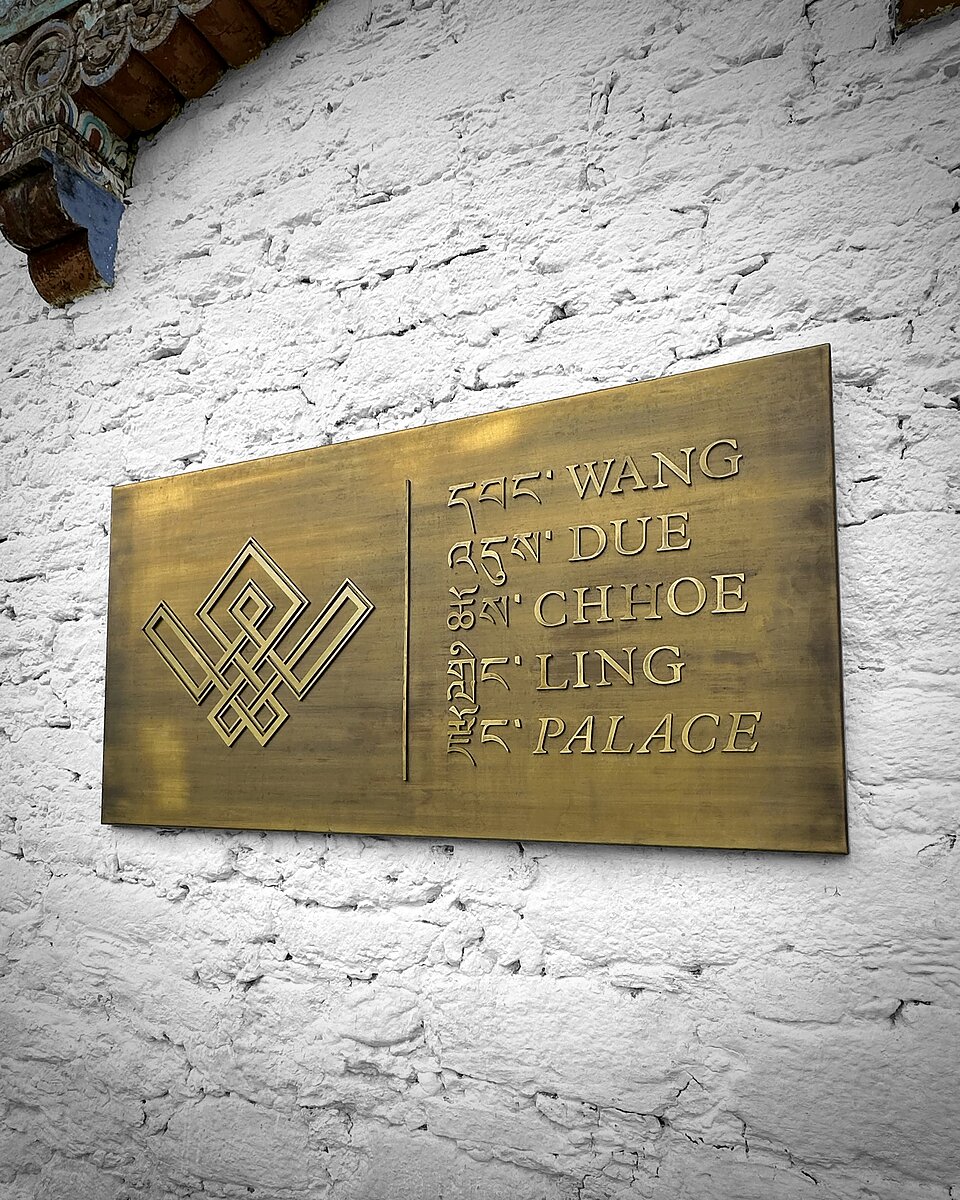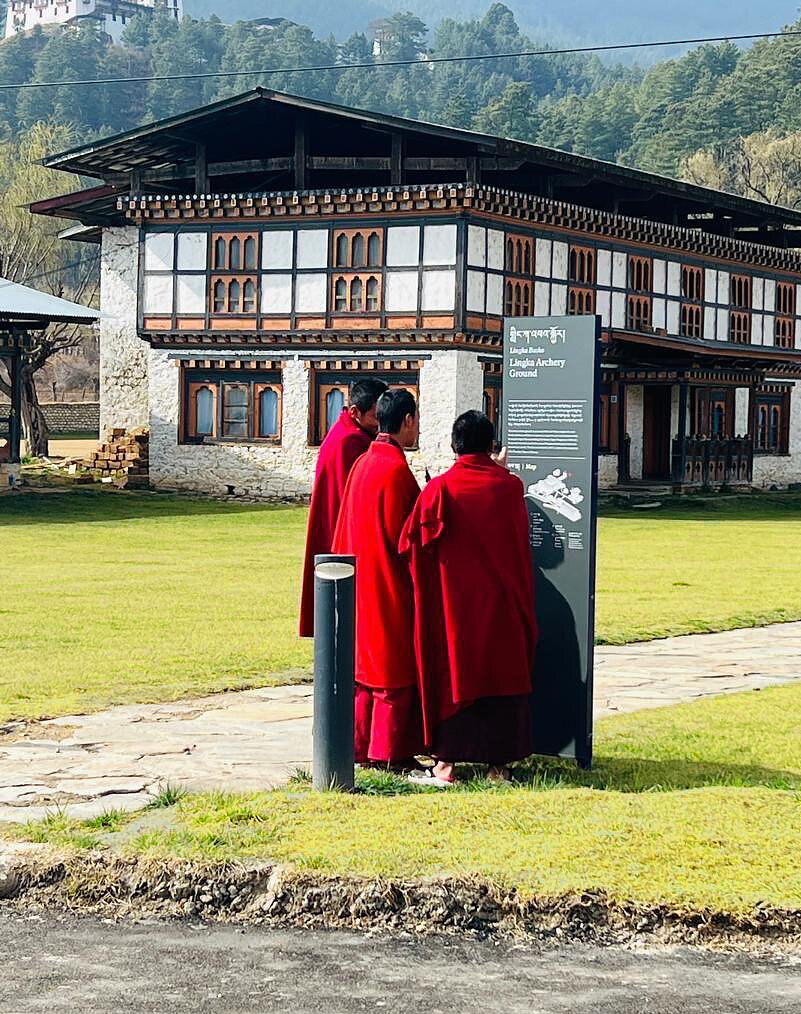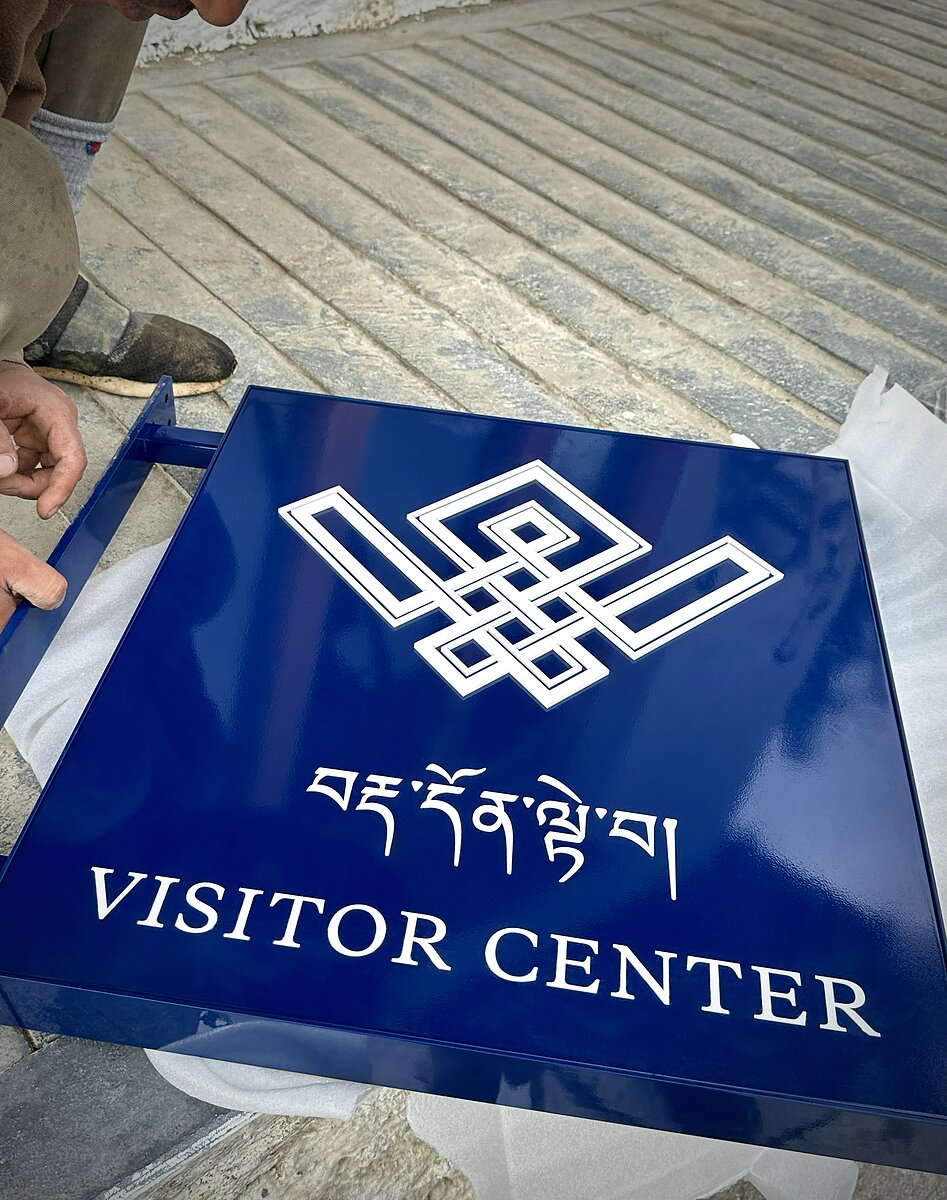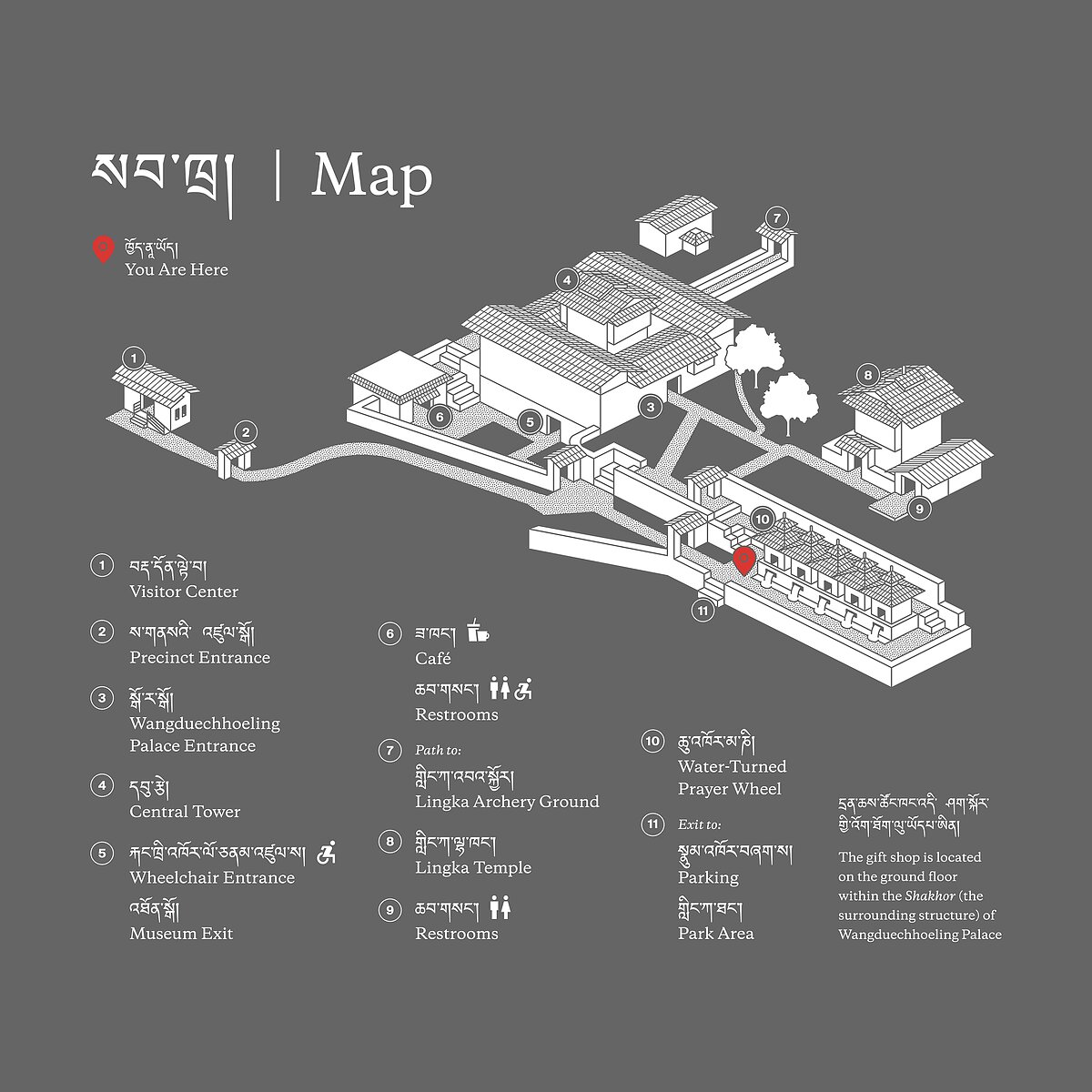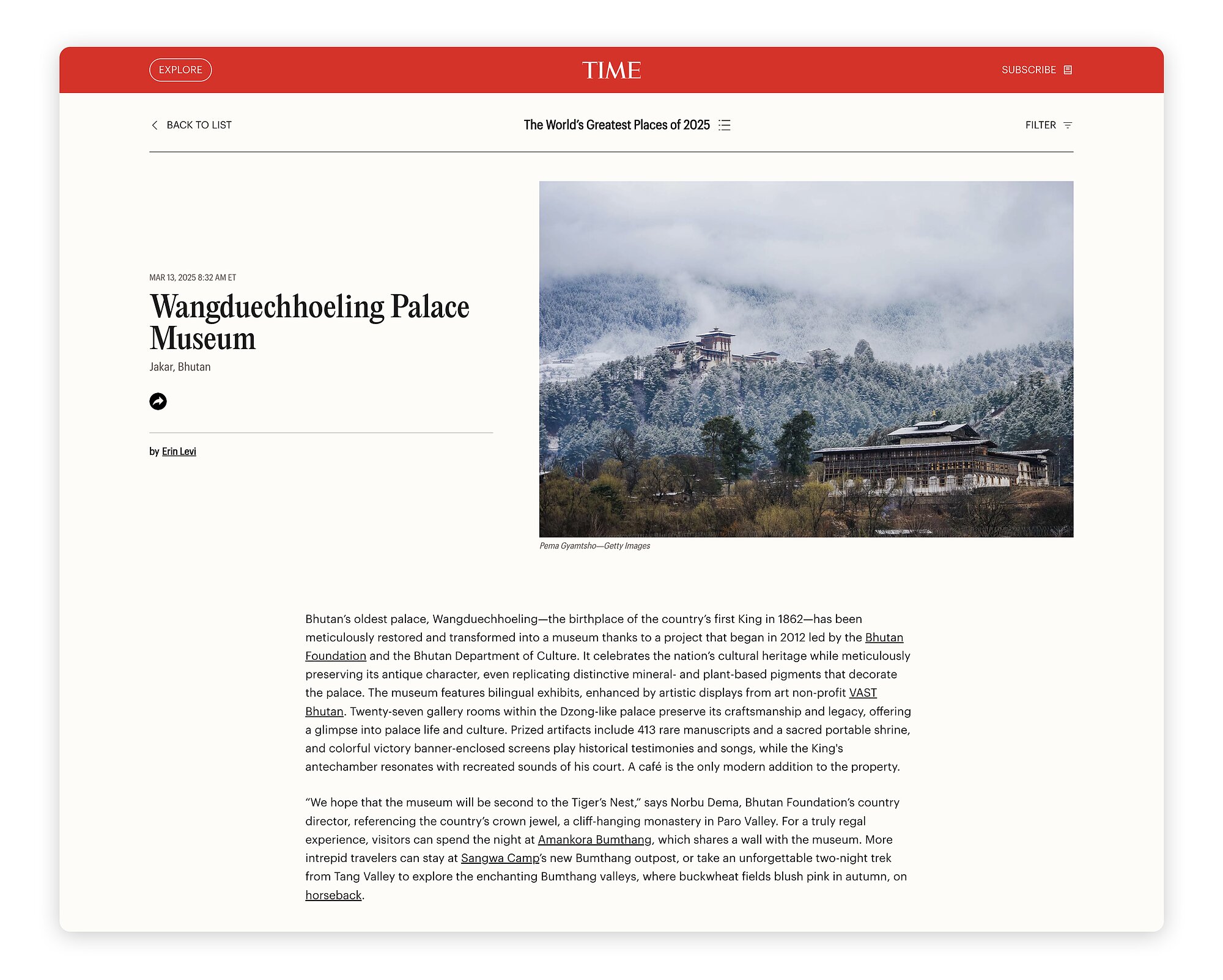Hoffman’s longstanding connection with The Bhutan Foundation led to a new kind of project for the studio in 2019, when we were invited to create the graphic identity system for the Wangduechhoeling Palace, a cultural institution in Bhutan’s Bumthang Valley.
Developing the Palace’s identity involved extensive historical research and a close study of identity systems used by cultural museums worldwide. The logomark needed to evoke traditional Bhutanese artistic language while being reimagined for a contemporary, global audience. The final design draws from the ‘endless knot’ motif commonly found in Buddhist art and reflected in the Palace’s architectural details. Its form creates a ‘W’ icon, symbolizing both the Palace and the Wangchuck royal family. The mark is accompanied by the Palace’s name in both Latin script and Dzongkha, Bhutan’s official language. By leading with Dzongkha and syllabically dividing the name, the identity highlights the Palace’s cultural roots and helps guide pronunciation for visitors unfamiliar with the language.
